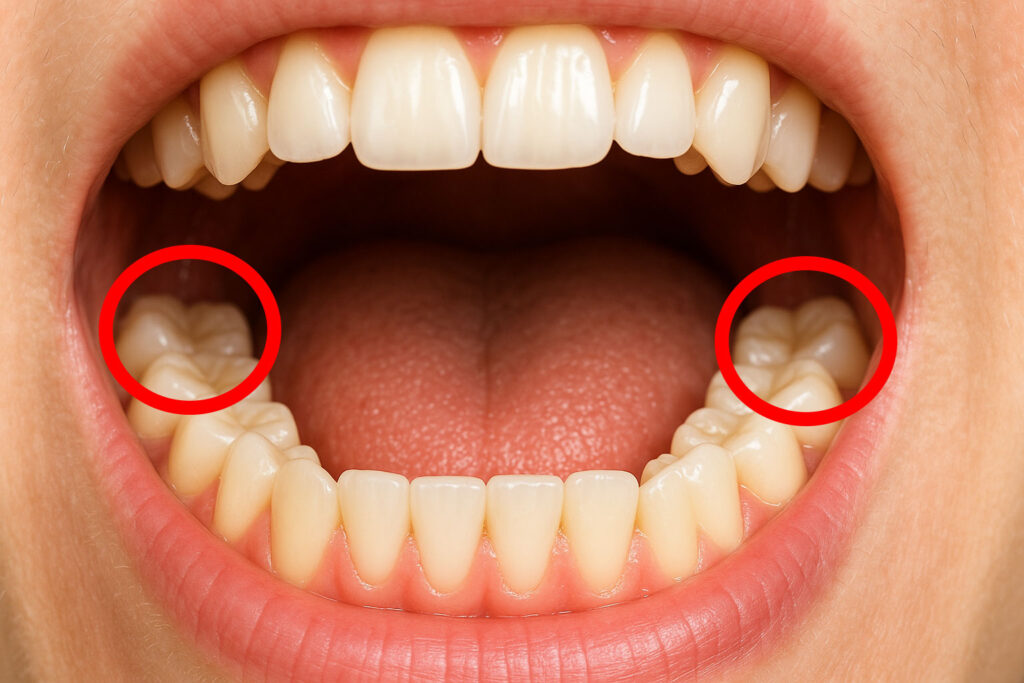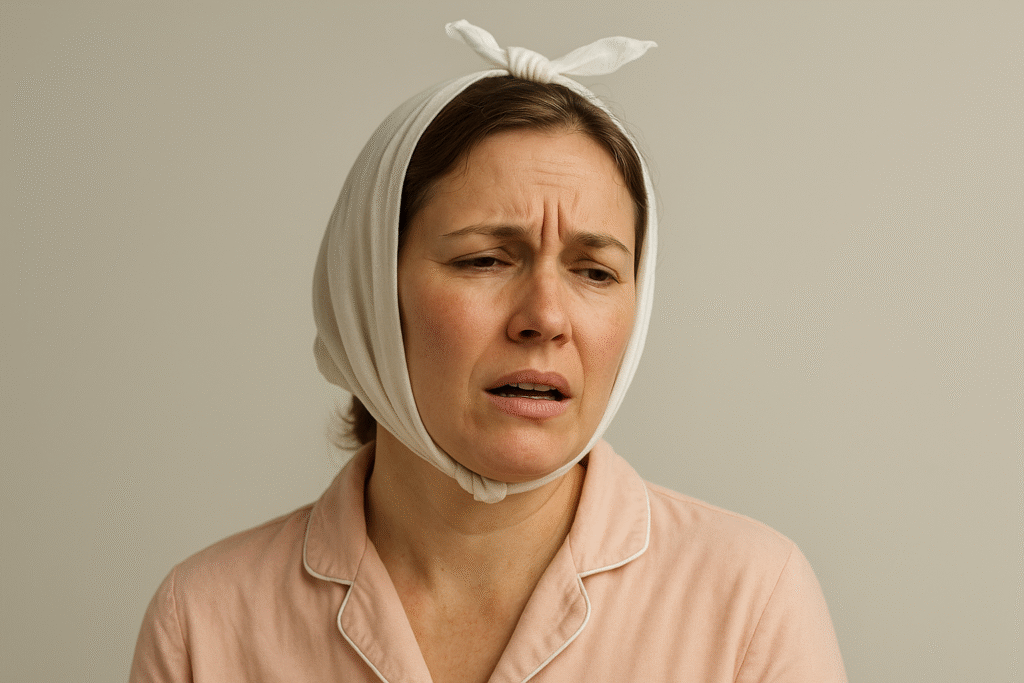Mouth ulcers, known in medicine as angular cheilitis, are small cracks or fissures that appear in the corners of the lips. Although at first glance they may appear to be a minor injury, they actually reflect an imbalance in the skin and microbiological balance of the lip area. They usually cause pain, stinging, and difficulty opening the mouth, and are sometimes accompanied by redness or scabbing.
Far from being a simple cosmetic problem, angular cheilitis can be caused by fungal or bacterial infections, nutritional deficiencies, or even mechanical factors such as friction from dentures or braces. There are also more complex forms—such as actinic cheilitis or exfoliative cheilitis—that affect the entire surface of the lips and require specific medical evaluation.
In this article, I explain why cold sores appear, what types of cheilitis exist, what the most effective medical and pharmacological treatments are, and what home remedies can help speed up healing without aggravating the lesion. You will also learn how to distinguish them from other conditions such as cold sores and how to prevent them from recurring.
>>> Do you live in Mallorca? Book your free first appointment <<<
| Differences between cold sores, herpes labialis, and actinic cheilitis | ||
|---|---|---|
| Cold sores / Angular cheilitis | Cold sores | Actinic cheilitis |
| Corners of the mouth, on both sides. | Upper or lower lip, usually in a single spot. | Mainly the lower lip, the area most exposed to the sun. |
| Crack or fissure, reddened and moist skin, sometimes with a thin crust. | Blisters grouped on a red base; they then form a yellowish crust. | Whitish or dry lip, with chronic peeling. |
| Pain, tightness, and stinging when opening the mouth. | Intense burning and itching before blisters appear. | Persistent dryness and roughness. |
| Fungal or bacterial infection combined with irritating factors. | Herpes simplex virus type 1 (HSV-1). | Accumulated sun damage from ultraviolet radiation. |
| Antifungal or antibiotic ointment; keep the area dry. | Topical or oral antiviral (acyclovir). | Lip sun protection and dermatological monitoring. |
| Not contagious. | Contagious. | Not contagious. |
| If the lesion persists for more than 7 days, consult a professional. Do not apply creams without a medical diagnosis. | ||
Causes of mouth ulcers or angular cheilitis
Mouth corners appear when the skin at the corners of the mouth weakens and cracks, creating a moist environment in which microorganisms proliferate. However, there is no single cause. Several factors may coexist behind angular cheilitis: infectious, nutritional, mechanical, or even emotional.
1. Fungal or bacterial infections
The most common cause is infection by Candida albicans, a fungus that lives naturally in the mouth but can multiply when the immune system is weakened or there is excess moisture. The bacterium Staphylococcus aureus may also be involved. In many cases, both microorganisms act together, which explains why mouth ulcers tend to persist if not treated properly.
2. Nutritional deficiency
A lack of iron or B vitamins (especially B2, B3, B6, and B12) impairs the regeneration of the lip mucosa and promotes the appearance of cracks. This type of cheilitis is more common in people with restrictive diets, anemia, or intestinal absorption problems.
3. Mechanical or irritating factors
Continuous contact with saliva, prolonged use of masks, poorly fitting dentures or braces can keep the area moist and cause microcracks that act as a gateway for infections. The habit of biting your lips or constantly moistening them also plays a role.
4. Environmental conditions
Cold weather, wind, and dehydration dry out the lips and make them more vulnerable. During the winter months, chapped lips are much more common, especially in people with thin lips or sensitive skin.
5. Emotional and systemic factors
Stress and low immunity do not directly cause angular cheilitis, but they do contribute to it by altering the body’s natural defenses. It can also occur in people with diabetes, digestive disorders, or immunosuppressive treatments.
In most cases, mouth sores appear due to a combination of causes. Therefore, treatment must address both the infection and the triggering factor: correcting a prosthesis, improving nutrition, or treating a vitamin deficiency is just as important as applying the right cream.
Causa | Physiological mechanism | Recommended treatment |
Fungal infection (Candida albicans) | Proliferation of the fungus in a warm, moist environment (saliva, dentures, closed corners of the mouth). | Topical antifungal (clotrimazole, miconazole) and keep the area dry. |
Bacterial infection (Staphylococcus aureus) | Bacteria entering through microcracks or previous irritation, causing local inflammation. | Antibiotic ointment (mupirocin or fusidic acid) and gentle disinfection. |
Deficiency of B vitamins (B2, B3, B6, B12) or iron | Alteration in the regeneration of the lip epithelium and weakening of the mucosa. | Nutritional supplement and regenerating cream with panthenol or zinc. |
Poorly fitted dental prostheses or braces | Constant friction or rubbing that keeps the corner of the mouth irritated. | Prosthetic adjustment and application of protective barrier (zinc oxide or petroleum jelly). |
Continuous contact with saliva or licking your lips | Excess moisture that alters the pH and promotes microbial colonization. | Avoid the habit, use neutral lip balms and barrier cream. |
Cold weather, wind, or dry conditions | Dehydration and loss of the lip’s natural protective film. | Continuous hydration, lip balm with natural wax, and avoid prolonged exposure. |
Stress or immunosuppression | Decrease in local defenses, facilitating microbial proliferation. | Medical supervision, adequate rest, and strengthening of the immune system. |

Types of cheilitis
The term cheilitis refers to any inflammation or alteration of the lips, although in everyday language many people associate it only with cold sores. In reality, there are several types of cheilitis with different causes and treatments. Knowing about them helps to identify when it is a simple irritation and when it is necessary to see a doctor or dentist.
Angular cheilitis (cheilosis)
This is the most common form. It affects the corners of the mouth, causing cracks, redness, and pain when talking or eating. It is related to infections caused by Candida albicans or Staphylococcus aureus, although it can also be caused by iron or vitamin deficiency. It is benign and treatable, but tends to recur if the underlying cause is not corrected.
2. Actinic cheilitis
It mainly appears in people who have been exposed to the sun for years—outdoor workers, farmers, or sailors. Ultraviolet radiation causes chronic damage to the lower lip, which becomes whitish, dry, and scaly. It is a precancerous condition and should be evaluated by a dermatologist, as it can develop into carcinoma over time.
3. Exfoliative cheilitis
It is characterized by continuous flaking and thickening of the lips. It may be caused by irritating habits, allergies, or anxiety that leads to unconscious lip rubbing or biting. It is not dangerous, but it is persistent and cosmetically bothersome.
4. Allergic or contact cheilitis
It occurs when the lips react to cosmetics, toothpaste, metals in dentures, or food products. It causes redness, itching, and a burning sensation. The key is to identify the allergen and avoid it.
5. Glandular cheilitis
More rarely, it affects the minor salivary glands of the lower lip. This appears swollen, reddish, and with secretions. It requires medical diagnosis, as it can be confused with more serious infections or inflammatory processes.
6. Miescher’s granulomatous cheilitis
It is a rare form of inflammatory origin that causes persistent enlargement of the lips. It can occur in isolation or in association with Melkersson-Rosenthal syndrome. It requires specialized follow-up.
Overall, the different forms of cheilitis share symptoms, but their origin and severity vary significantly. Identifying which form you have is the first step in applying the appropriate treatment and avoiding long-term complications.
How to distinguish between cold sores, herpes labialis, and actinic cheilitis
Cracks at the corners of the mouth / Angular cheilitis | Cold sore | Actinic cheilitis | |
Affected area | Corners of the lips (both sides). | Upper or lower lip, single point. | Mainly the lower lip, an area exposed to the sun. |
Appearance | Crack or fissure, reddened and moist skin, sometimes with a thin crust. | Blisters clustered on a red base, then yellowish scab. | Whitish or dry lips, with chronic peeling. |
Feeling | Pain, tightness, stinging sensation when opening the mouth. | Intense burning and itching before blisters appear. | Persistent dryness, feeling of roughness. |
Main cause | Fungal or bacterial infection + irritating factors. | Herpes simplex virus type 1 (HSV-1). | Cumulative sun damage (ultraviolet radiation). |
Treatment | Antifungal or antibiotic ointment, local moisturizing, correction of the cause. | Topical or oral antiviral (acyclovir). | Lip sun protection, dermatologically tested. |
Contagious | No, except in cases of active infection. | Yes, highly contagious. | No. |
Medical risk | Low, although it tends to recur. | Low-medium, due to frequent reactivations. | Serious if left untreated: it can develop into a precancerous lesion. |
Symptoms and differential diagnosis
Angular cheilitis manifests itself through a combination of very characteristic local symptoms. Although it is usually easy to recognize, it is often confused with other lip conditions such as cold sores or actinic cheilitis, leading to incorrect treatment. A correct diagnosis depends on both clinical observation and the patient’s context.
1. Main symptoms
- Crack or fissure in one or both corners of the lips.
- Pain and stinging when opening the mouth, speaking, or eating.
- Local redness, sometimes with a thin yellowish crust.
- Feeling of tightness or constant burning.
- In more advanced cases, a moist lesion or even minor suppuration may appear.
When the cause is infectious, the lesions tend to persist or worsen despite the use of lip balms. If the cause is irritation or nutritional deficiency, they may improve temporarily but frequently reappear.
2. Differences from other injuries
- Cold sores: begin with itching and tingling, followed by small clusters of blisters that then form a thick crust. They affect a single area of the lip and are contagious.
- Actinic cheilitis: develops slowly due to chronic sun damage. The lip, especially the lower lip, becomes whitish, dry, and flaky. It does not cause acute pain, but it does cause a continuous feeling of roughness.
- Cracks caused by dryness or mild irritation: these do not present redness or obvious infection, and usually resolve with local moisturizing.
3. Clinical diagnosis
The diagnosis is made by a dentist or dermatologist through direct inspection. In persistent cases, a microbiological culture or blood test may be requested to rule out anemia or vitamin deficiencies. In patients who work outdoors or are chronically exposed to the sun, it is important to rule out
, due to its potential to develop into more serious lesions.
An accurate diagnosis allows for appropriate treatment and prevents chronicity, which is common when mouth sores are confused with herpes or simple wounds caused by dryness.
Medical and pharmacological treatment
The treatment of angular cheilitis depends directly on its cause. In most cases, local measures are combined with correction of the factors that contribute to the appearance of cracks. A common mistake is to apply creams without a diagnosis, which can aggravate the infection or delay healing.
The most effective treatments according to the origin of the problem are described below.
1. Topical treatment
The first step is to control the infection and protect the affected area.
- Antifungal ointments: when Candida albicans is present, creams containing clotrimazole, miconazole, or ketoconazole are indicated.
- Antibiotic ointments: if the cause is bacterial (Staphylococcus aureus), mupirocin (Bactroban) or fusidic acid are used.
- Combination creams: for mixed infections (fungal and bacterial), formulations containing both active ingredients are recommended.
- Barrier and regenerative creams: help isolate the wound from saliva and promote healing. Zinc oxide, panthenol, or sterile petroleum jelly are excellent options.
Important: Corticosteroid creams should only be used under medical supervision, as they can worsen a fungal or bacterial infection.
2. Oral treatment
When the cause is internal or systemic, topical treatment is insufficient.
- Vitamin supplements from the B group and iron, if a deficiency has been demonstrated.
- Oral antifungals (fluconazole) in cases of recurrent candidiasis.
- Systemic antibiotics if there is extensive infection or if it does not respond to local treatment.
The professional will assess whether there is any underlying condition (such as diabetes, anemia, or digestive disorders) that needs to be treated to prevent relapses.
3. Support measures
- Avoid licking your lips and keep the area clean and dry.
- Use neutral lip balms, without perfumes or menthol.
- Drink water frequently and maintain good oral hygiene.
- If you wear dentures or dental appliances, check that they fit properly and are clean.
- In cold or windy weather, apply a protective cream before going outside.
4. Duration and evolution
With proper treatment, mouth sores usually improve within 3 to 7 days. However, if the cause is not corrected (e.g., nutritional deficiency or poorly fitting dentures), they are likely to reappear. That is why medical follow-up is as important as medication.
The key is to treat the injury and its cause at the same time, which allows for complete healing and prevents chronicity.
🦠 Topical antifungal
Active ingredient: Clotrimazole, miconazole, or ketoconazole.
Indications: Infection by Candida albicans or constant moisture in the corners of the mouth.
How to use: Apply a thin layer twice a day for 7–10 days.
Precautions: Do not combine with corticosteroids; keep the area dry.
💉 Topical antibiotic
Active ingredient: Mupirocin (Bactroban) or fusidic acid.
Indications: Lesions with pus or yellowish scabs (bacterial infection).
How to use: Apply three times a day for up to 5 days or as prescribed.
Precautions: Do not use preventively; may cause bacterial resistance.
🌿 Regenerating cream
Active ingredient: Panthenol, centella asiatica, or allantoin.
Indications: Mild irritation or healing stage.
How to use: Apply several times a day to maintain hydration.
Precautions: Does not replace antimicrobial treatment if there is infection.
🛡️ Protective barrier cream
Active ingredient: Zinc oxide or sterile petroleum jelly.
Indications: Protection against saliva, cold, or mechanical friction.
How to use: Apply before bedtime or before going outside.
Precautions: Do not apply to open or suppurating wounds.
💊 Complementary oral treatment
Active ingredient: Vitamin B complex + iron.
Indications: Recurrent mouth ulcers or those associated with anemia.
Directions for use: As directed by your doctor, for 2–4 weeks.
Precautions: Do not self-medicate; consult your doctor first if you have digestive disorders.
Always consult a professional before starting any treatment.
Home remedies for mouth ulcers or angular cheilitis
Although medical treatment is the basis for healing, there are simple and safe home remedies that can relieve symptoms, speed up healing, and prevent recurring irritation. However, it is important to distinguish between those that really help and those that, although popular, can worsen the injury.
1. Useful home remedies
- Pure honey: acts as a natural antibacterial agent and helps maintain moisture without macerating the skin. Apply a small amount to the fissure for 10–15 minutes and remove any excess.
- Extra virgin olive oil: forms a protective barrier and provides vitamin E, promoting regeneration. It can be applied several times a day.
- Neutral petroleum jelly or medical balm: keeps the area isolated from saliva and reduces friction.
- Warm compresses infused with chamomile: relieve inflammation and gently cleanse the area.
- Good hydration: drinking enough water and keeping your lips naturally moist helps reduce the dryness that triggers cracks.
2. Medications to avoid
- Vinegar, lemon, or garlic: despite their reputation as antiseptics, they irritate broken skin and delay healing.
- Toothpaste or baking soda: these are abrasive and alter the pH, promoting the proliferation of microorganisms.
- Alcohol or hydrogen peroxide: dry out and damage regenerating tissue.
- Perfumed or mentholated lip balms: they produce a false sensation of freshness, but irritate the corners of the mouth.
3. Complementary care
- Avoid licking your lips or keeping them constantly moist.
- Do not pick at scabs or touch the area.
- Apply an unscented balm before going to bed or going out in the cold.
- In cases of recurrence, combine remedies with a medical checkup to rule out nutritional deficiency or persistent infection.
Applying these care measures alongside medical treatment promotes faster healing and significantly reduces the possibility of relapse.
Prevention of mouth sores or angular cheilitis
Prevention is the most important part of treatment, especially in people who suffer from recurrent cold sores. Once the skin at the corners of the mouth has cracked, it tends to weaken and can easily be injured again if protective measures are not taken. Preventing angular cheilitis involves taking care of your lips, maintaining good oral hygiene, and correcting the factors that contribute to its onset.
1. Daily care
- Constant hydration: apply neutral lip balms, without fragrances or menthol, containing natural wax or shea butter.
- Avoid licking your lips: saliva dries out and alters the pH, facilitating infections.
- Protect from the weather: use sunscreen (SPF 30 or higher) during the summer, and barrier creams with zinc oxide in the winter.
- Do not share lip cosmetics: applicators can be a means of transmitting bacteria and fungi.
2. Oral hygiene and care
- Maintain proper oral hygiene by brushing your teeth and gums after every meal.
- Periodically check prostheses, orthodontic appliances, or dental devices that may cause friction or saliva accumulation in the corners of the mouth.
- Change your toothbrush every three months and avoid excessive use of alcohol-based mouthwashes.
3. Nutrition and general health
- Ensure a balanced diet with foods rich in B vitamins (B2, B3, B6, B12), iron, and zinc (whole grains, legumes, lean meats, spinach, nuts).
- Avoid prolonged nutritional deficiencies or restrictive diets without medical supervision.
- Control diseases that weaken the immune system, such as diabetes, anemia, or digestive disorders.
- Reduce chronic stress, as it affects immunity and healing.
4. Professional review
If mouth ulcers appear more than twice a year or do not heal easily, an evaluation by a dentist or dermatologist is recommended. The professional can identify hidden causes—such as ill-fitting dentures, oral habits, nutritional deficiencies, or persistent infections—and customize preventive treatment.
Preventing cold sores not only improves aesthetics and comfort, but also breaks the cycle of irritation and infection that causes them to recur. Healthy lips reflect internal balance and proper oral health care.
When to see a doctor
Mouth ulcers or angular cheilitis are usually mild and respond well to topical treatment or home care. However, in some cases, they may indicate a more serious underlying condition or become complicated if not treated properly. Knowing when to see a doctor or dentist is key to preventing the condition from becoming chronic or recurring frequently.
1. If the injury does not improve within 5 to 7 days
If, after applying antifungal or antibiotic creams, or following the recommended remedies, the wound does not heal or worsens, there may be a persistent infection or a factor that is preventing healing (such as a poorly fitting prosthesis or a nutritional deficiency). In that case, it is necessary to perform a culture or a professional assessment.
2. If bleeding, discharge, or severe pain occurs
These signs may indicate an active bacterial infection or a complication. Your doctor may prescribe a specific antibiotic and assess whether it needs to be combined with an antifungal or anti-inflammatory medication.
3. If mouth sores are recurrent
When lesions reappear several times a year, there is most likely a systemic cause, such as anemia, diabetes, vitamin deficiency, or immunosuppression. In these cases, topical treatment is only palliative. A blood test and general examination are essential.
4. If the lesions spread or change in appearance
If the reddened area spreads or whitish patches, thick scabs, or flaking appear, it is important to see a dermatologist. It could be chronic or actinic cheilitis, which requires medical attention because it can lead to cell degeneration if not treated in time.
5. If there are other associated symptoms
Fatigue, hair loss, mouth ulcers, or paleness may accompany nutritional deficiencies or immune disorders. A healthcare professional will be able to interpret these signs and determine whether cheilitis is part of a larger condition.
Seeking medical advice in a timely manner not only allows the injury to be resolved more quickly, but also enables the detection of underlying health problems that might otherwise go unnoticed. In many cases, mouth sores are a visible symptom that something in the body needs attention.
Typical profile of a patient with mouth ulcers or angular cheilitis
Angular cheilitis occurs most frequently in people with a combination of anatomical, nutritional, and environmental factors that promote irritation and infection of the corners of the mouth. The most common characteristics of the typical patient are described below.
👩🦳 Age and gender
It is most common in adults over 50 and is slightly more frequent in women. It can also occur in children who drool or use pacifiers for long periods of time.
👄 Anatomical characteristics
Presence of deep folds in the corners of the mouth, poorly fitting dentures, or loss of bone support that facilitates saliva accumulation.
🥗 Nutritional factors
Deficiency of vitamins B2, B3, B6, B12 or iron, common in restrictive diets or intestinal absorption problems.
💧 Habits and environment
Habit of licking your lips, prolonged use of face masks, and exposure to cold or dry climates that dry out the skin.
⚕️ Associated medical conditions
Common in people with diabetes, anemia, chronic oral candidiasis, or immunosuppression.
Overall, the typical patient with angular cheilitis is an adult with persistent moisture in the corners of the mouth, nutritional deficiencies, or poorly fitting dentures. Effective treatment requires addressing both the lesion and the underlying cause to prevent recurrence.
Frequently asked questions about mouth ulcers or angular cheilitis
1. Are mouth ulcers or angular cheilitis contagious?
In most cases, they are not contagious. They can only be transmitted if there is an active fungal (Candida albicans) or bacterial (Staphylococcus aureus) infection. They are not spread by casual contact, but it is recommended not to share cutlery, glasses, or lip cosmetics while there are visible lesions, as they may contain microorganisms.
2. Do cold sores heal on their own?
Some minor cracks may close spontaneously if moisture or constant rubbing is avoided. However, when there is infection or nutritional deficiency, they do not disappear without medical treatment and tend to reappear in the same spot. Applying a protective or antifungal cream under professional guidance speeds up healing and prevents chronicity.
3. What cream can be used to heal cold sores?
It depends on the cause:
- If there is a fungal infection, antifungal ointments such as clotrimazole or miconazole are used.
- If it is bacterial, topical antibiotics such as mupirocin or fusidic acid are used.
- In cases of irritation or dryness, barrier or regenerative creams with zinc oxide or panthenol work best.
- Corticosteroids should never be used without medical advice, as they can aggravate an active infection.
4. Why do cold sores appear so often?
Recurrent cold sores are often related to nutritional deficiencies (iron, B vitamins), poorly fitting dentures or braces, prolonged exposure to cold or sun, or the habit of licking your lips. Stress and periods of low immunity also play a role. Treating only the sore is not enough: it is essential to correct the cause so that they do not reappear.
5. Can cold sores appear due to stress or low immunity?
Yes. Chronic stress reduces the skin’s defense capabilities and promotes both dryness and infections. When the body is weakened, microorganisms naturally present in the mouth can proliferate in the corners of the mouth. Therefore, it is advisable to maintain adequate rest habits, a good diet, and to check your overall health if cold sores recur.
6. What is the difference between cold sores and cheilitis?
The term cheilitis refers to any inflammation of the lips, while cold sores (or angular cheilitis) only affect the corners of the mouth. There are different types of cheilitis—actinic, exfoliative, allergic, glandular, etc.—with different causes and treatments.
In summary: all mouth ulcers are a form of cheilitis, but not all cheilitis is a mouth ulcer.
7. How long does it take for mouth ulcers to heal?
With proper treatment, mouth ulcers usually improve in 3 to 10 days. Mild cases may disappear more quickly, but if the cause is not corrected (vitamin deficiency, defective prosthesis, constant moisture), the lesions tend to reappear. It is important to complete the entire course of treatment even when symptoms subside.
8. When should I see a doctor?
It is recommended to see a doctor or dentist if:
- The lesion does not improve within a week.
- Bleeding, severe pain, or persistent scabbing appears.
- Mouth ulcers recur frequently.
- They spread or change in appearance (plaques, flaking, whitening).
- These signs may indicate chronic or actinic cheilitis, which requires professional evaluation.
9. Can cold sores or angular cheilitis be prevented?
Yes, in most cases. Preventive measures include:
- Keeping your lips moisturized with neutral balms.
- Avoiding licking your mouth or keeping the area moist.
- Eating a diet rich in B vitamins and iron.
- Checking dentures or dental appliances to avoid friction.
- Protecting yourself from the cold and sun with suitable lip creams.
- Consulting a specialist if they reappear frequently.
10. What foods help prevent cold sores?
Foods that strengthen the lip mucosa are those rich in B vitamins, iron, and zinc, such as:
- Whole grains and legumes.
- Spinach, chard, and other leafy green vegetables.
- Oily fish, chicken, turkey, and lean meats.
- Nuts and seeds.
- Eggs and fermented dairy products.
- A balanced and varied diet helps keep your skin and lips in good condition, reducing the risk of cold sores.
 Whatsapp
Whatsapp




